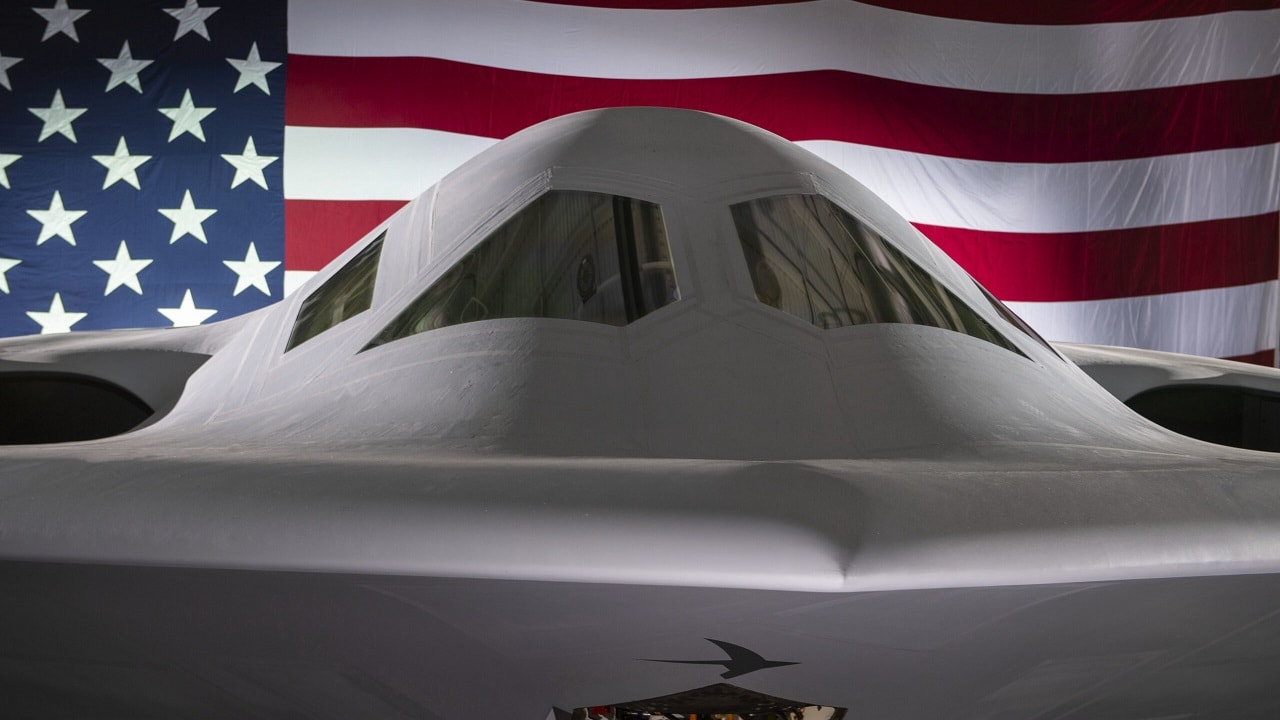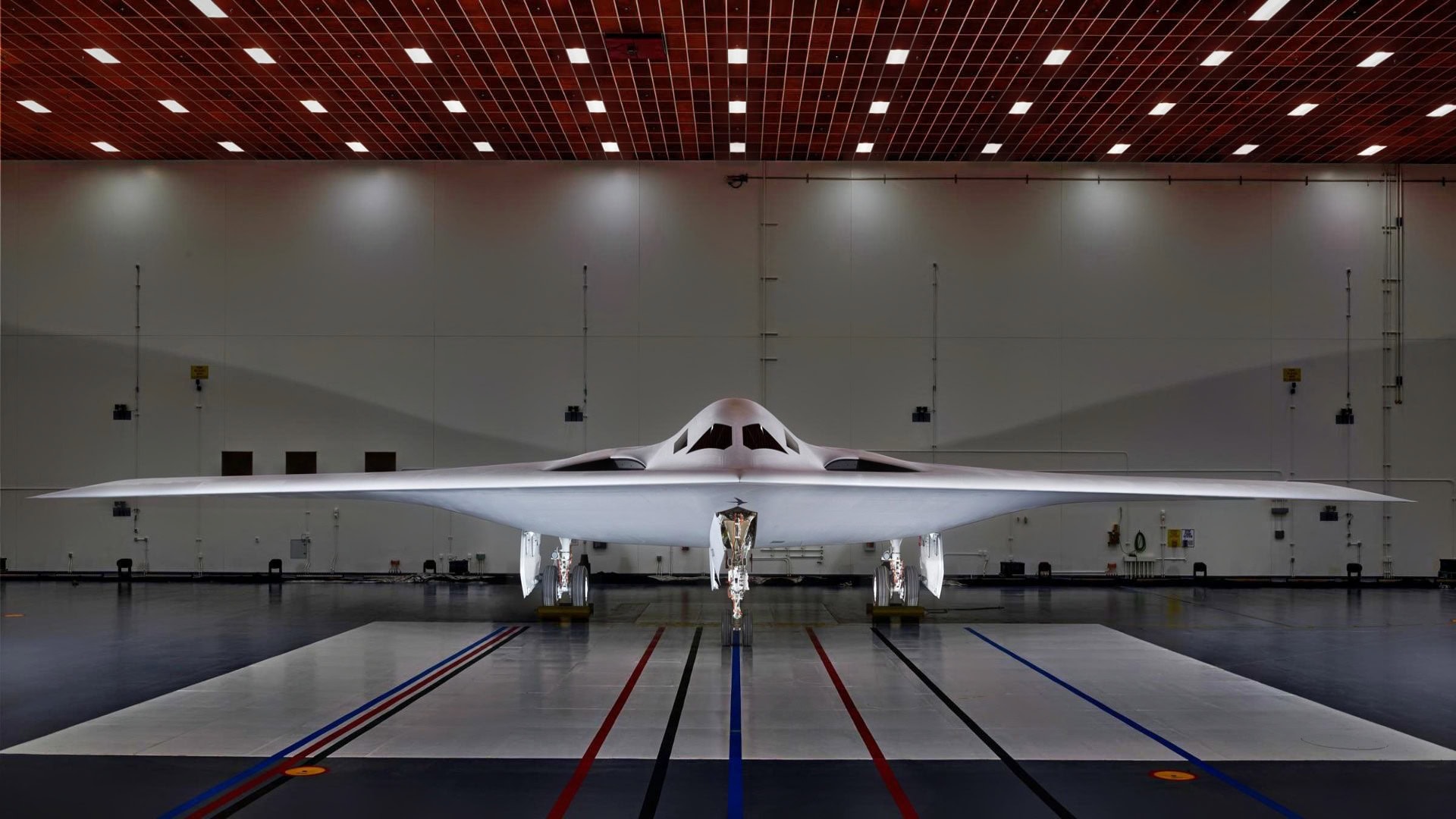After more than three decades in service with the United States Air Force, the Northrop-Grumman-built B-2 Spirit is set to retire, along with its older sibling, the B-1, replaced by the new B-21 Raider. Also manufactured by Northrop, the sixth-generation bomber represents an evolution in technological advancement, with an open architecture that allowed for rapid inclusion of new weaponry, and advanced digital manufacturing (AM) that is claimed to help mitigate the substantial risk of production.

The B-21 Raider was unveiled to the public at a ceremony December 2, 2022 in
Palmdale, Calif. Designed to operate in tomorrow’s high-end threat environment, the B-21 will play a critical role in ensuring America’s enduring airpower capability. (U.S. Air Force photo)
The new B-21 Raider can fly as far as 6,000 miles (estimates vary) without refueling and has the capacity for conventional and nuclear payloads, including the Long-Range Stand-Off cruise missile, as well as JDAM and JASSM precision-guided munitions.
B-21 Raider and History
Named after the Doolittle Raids of World War II, in which 16 B-25 Mitchell bombers embarked on a mission that altered the course of the war, the stealthy B-21 Raider is technologically important as much of its systems are manufactured in a flexible manner, allowing the integration of data, sensors, and weapons.
The digital manufacturing environment allows the aircraft to bypass generational upgrades that ultimately doomed its Spirit predecessor.
Second, the Raider gives the Air Force a degree of relief from the burden of maintaining three generations of bomber aircraft, as it will replace the B-1, the B-2, and eventually the B-52, as well as providing a nuclear deterrent to increasing Chinese military capability.
The B-21 represents a component of a $1 trillion-dollar overhaul of U.S. defenses, which also includes next-gen submarines and land-based missiles to counter Chinese-made hypersonic missiles and other warfare capabilities.
The Indo-Pacific and the Raider: A Needed Bomber
Operational readiness in the Indo-Pacific construct is increasingly vital as threats to American dominance and hegemony in the region are being challenged by Chinese aggression and rapid military advancement.
The B-21 platform is also important to Northrop as American allies are currently without the capability to match China’s ability to hit targets from a large distance.
Additionally, Australia, which has hosted the B-2 recently for a joint task force mission, could represent a new customer, as the aircraft represents a more flexible deterrent than its current submarine program, in part due to its ability to carry a variety of weaponry and adapt to new weapons quickly.
Plus, the AUKUS submarine program, in partnership with the US and the United Kingdom, will not deliver until at least 2040.
The B-21 Raider Has Some Serious Bottlenecks to Overcome
The problem with the B-21, however, is the current rate of production. There are no clear answers on when the U.S. Air Force will receive the B-21s it ordered, and considering possible overruns, it may not be cost-effective.
In 2016, the Congressional Budget Office (CBO) estimated that it would cost approximately $80 billion to acquire the first 100 B-21s, and a recommendation was made to defer its development to 2028, in an effort to save $32 billion between 2020 and 2028.
Production of the LRSO cruise missiles that are a part of the B-21’s armament are expected to be around $500 million, also according to the CBO.

B-21 Raider U.S. Air Force. Image Credit: U.S. Air Force.
B-21 Bottomline
In an era of rapidly developing symmetrical and asymmetrical technologies, the B-21 is more critical now than it will be by its delivery date in 2028. But will it be too late?
About the Author: Mark S. Cogan
Mark S. Cogan is an Associate Professor of Peace and Conflict Studies at Kansai Gaidai University in Osaka, Japan. His research interests include Southeast Asia and the broader Indo-Pacific region, as well as security studies, peacebuilding, counter-terrorism, and human rights. He is a former communications specialist with the United Nations, serving in Southeast Asia, Sub-Saharan Africa, and the Middle East.
UPDATE: We have corrected the piece to fix a numerical error. We apologize for this.

